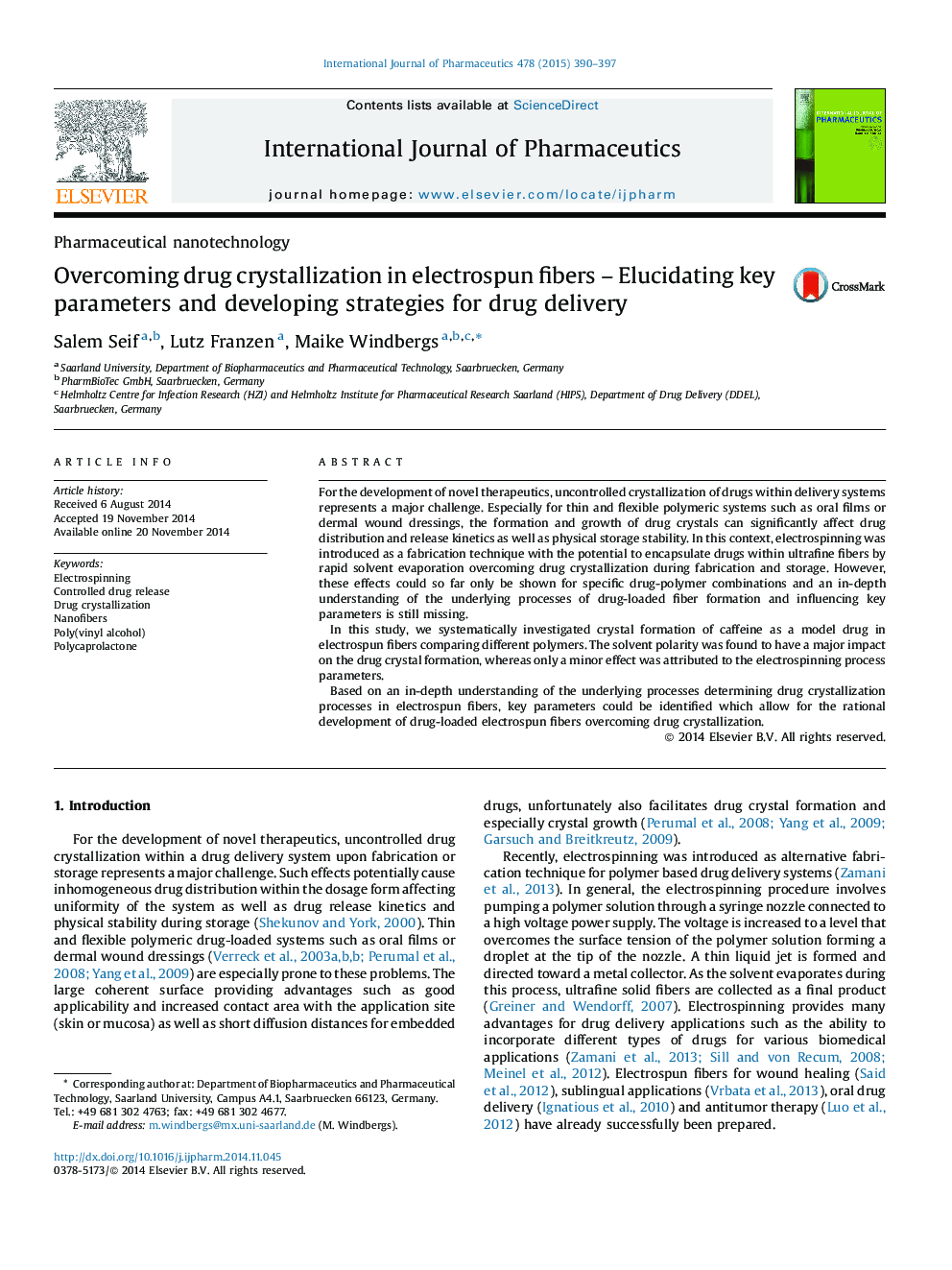| Article ID | Journal | Published Year | Pages | File Type |
|---|---|---|---|---|
| 2501603 | International Journal of Pharmaceutics | 2015 | 8 Pages |
For the development of novel therapeutics, uncontrolled crystallization of drugs within delivery systems represents a major challenge. Especially for thin and flexible polymeric systems such as oral films or dermal wound dressings, the formation and growth of drug crystals can significantly affect drug distribution and release kinetics as well as physical storage stability. In this context, electrospinning was introduced as a fabrication technique with the potential to encapsulate drugs within ultrafine fibers by rapid solvent evaporation overcoming drug crystallization during fabrication and storage. However, these effects could so far only be shown for specific drug-polymer combinations and an in-depth understanding of the underlying processes of drug-loaded fiber formation and influencing key parameters is still missing.In this study, we systematically investigated crystal formation of caffeine as a model drug in electrospun fibers comparing different polymers. The solvent polarity was found to have a major impact on the drug crystal formation, whereas only a minor effect was attributed to the electrospinning process parameters.Based on an in-depth understanding of the underlying processes determining drug crystallization processes in electrospun fibers, key parameters could be identified which allow for the rational development of drug-loaded electrospun fibers overcoming drug crystallization.
Graphical abstractFigure optionsDownload full-size imageDownload high-quality image (250 K)Download as PowerPoint slide
